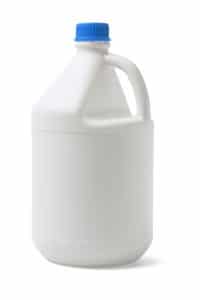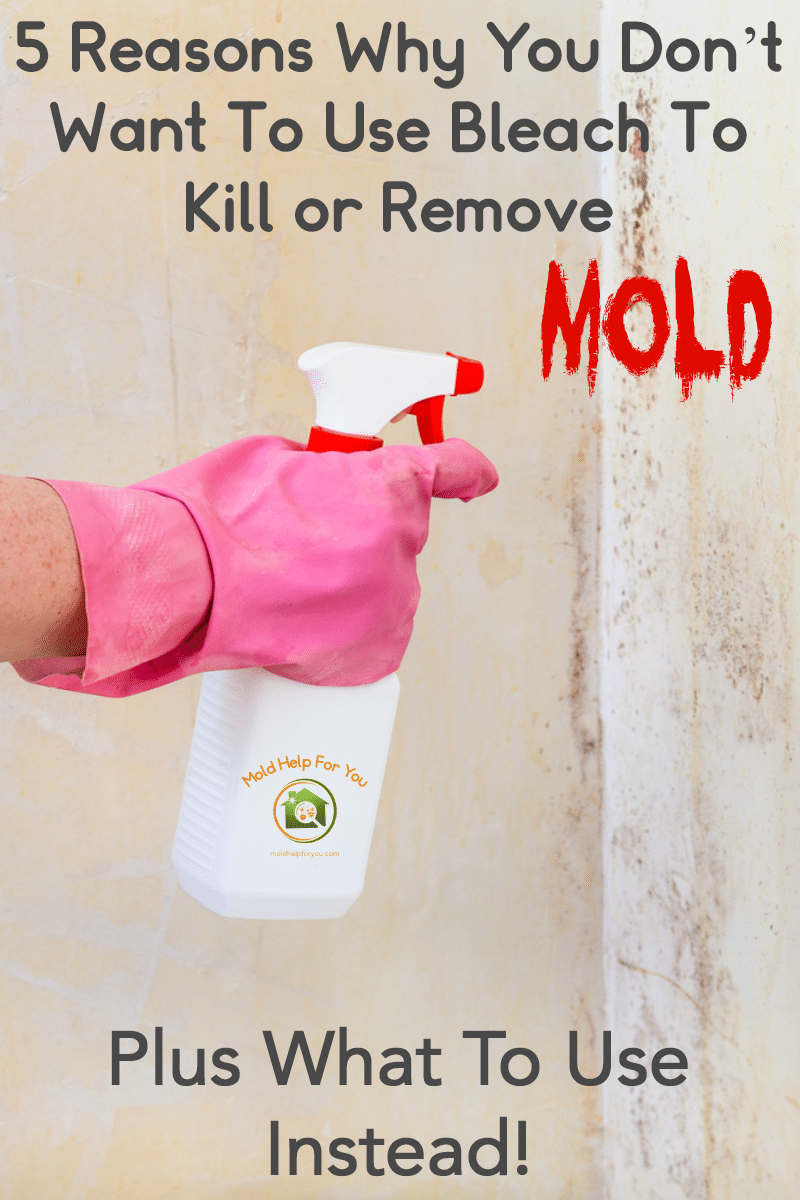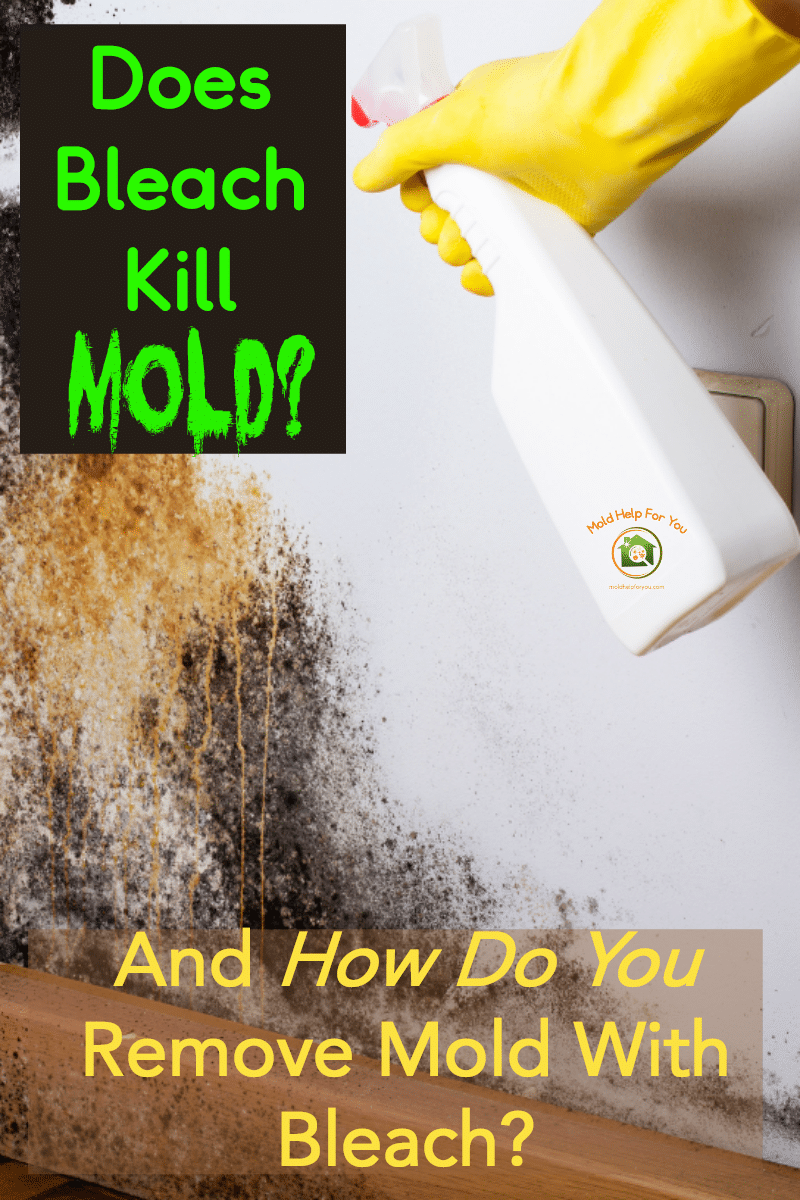Does Bleach Kill Mold
This post may contain affiliate links. Read our full disclosure.
You are here because you or someone close to you has mold and you are wondering if bleach kills mold. It is a valid concern as there is a lot of misinformation about bleach and mold both on the internet and provided by mold remediation companies.
A quick internet search pulls up all kinds of conflicting information about bleach and mold. Some articles state emphatically that bleach kills mold while others caution against using bleach to remove mold.
So what’s the deal? Can bleach make mold worse or can you spray bleach on mold?
Let’s start with this little nugget of information. OSHA (Occupational Safety and Health Administration) was one of the first federal agencies to STOP recommending the use of liquid bleach for mold remediation. The EPA (Environmental Protection Agency) has since edited their “A brief guide to mold and moisture and your home” to exclude their once suggested use of bleach as a means to kill mold.
Hmm…. Those are two big deal agencies and while not correct 100% of the time, they usually know what they are talking about and only change their policies and guidelines after extensive evidence has been presented.
What Is Bleach?
Bleach is the generic term that describes a variety of chemicals used to whiten clothes, lighten hair colors, and remove stains. Additionally, most types of bleach will disinfect and sterilize germs and bacteria. While there are several types of bleach, chlorine bleach is a common household bleach.

So, Does Bleach Kill Mold?
Technically speaking…yes it can.
But it isn’t that cut and dry. You see, germs and bacteria, like salmonella and influenza, require a host (like you and me) to thrive. While they will live for a period of time outside the body, they will eventually die without a host. This makes cleaning with bleach an effective way to kill germs and bacteria because they don’t have the means to reproduce outside of a host.
Mold is much more complicated than that. Hence why it causes far greater destruction than a virus. Mold is a naturally occurring airborne fungus that aids in the decomposition of organic materials. If you have mold growing in your home, you also have mold spores in the air. Instead of an animal or human host, mold lives on organic material and moisture. (Learn more about the basics of mold on my Mold Facts page).
Since mold spores can “soak into” a surface, mold can outrun bleach. A virus or bacteria can’t do that because they live on surfaces. So if you catch a mold spore at the right moment, bleach MAY be able to remove it but it could also cause some other issues along the way. Read on…

5 Reasons Why You Don’t Want To Use Bleach To Kill or Remove Mold
1. Bleach Does What It Does Best – It Bleaches
Bleach basically only removes the color from the visible mold. It magically turns visible mold into “hidden mold.” It provides a false sense of security that the mold has been removed.
2. Bleach Can Only Reach Surface Mold
In case you didn’t know, mold is NEVER just on the surface of something. It roots and it often roots deeply. This is a survival mechanism. Mold doesn’t want to be removed. As such, you can’t kill any mold with a product that only reaches the surfaces.
Bleach only reaches the mold on the surface without affecting the membrane underneath. You need to kill and remove this underlying membrane to effectively remove the mold growth and prevent it from returning. Bleach cleaners cannot kill this membrane because its chemical structure prevents it from penetrating porous surfaces. This causes the mold membranes to move deeper into the affected surface to hide from the bleach. You don’t want mold to go on the run right?
3. Bleach Causes More Mold Growth
Say what? I know, I know. You are trying to kill mold with bleach not make it grow more. But guess what? Bleach has been proven to actually cause additional mold growth.
Another problem with using bleach is that it can actually multiply the mold growth. But how?
When bleach is introduced to mold colonies, the mold recognizes the bleach as a threat and reacts. This means that it begins to reproduce at a rapid rate. It roots deeper and grows stronger.
Bleach also contains 90% water and mold loves moisture obviously. When bleach is applied, the chlorine quickly evaporates after use leaving behind a ton of water. This water often soaks into the surface allowing the mold to grow more in this moist environment. So in effect, using bleach actually feeds the internal mold spores!
4. Chlorine Bleach Looses Its Effectiveness Over Time
Chlorine bleach rapidly loses its effectiveness. When exposed to air, chlorine evaporates. This means that you might have a bottle of bleach that is basically useless. Basically, you would be pouring water on mold spores which as we just discussed is not a good solution.
5. Using Bleach To Kill Mold Is Toxic
Chlorine bleach produces fumes that pollute the air and can become harmful to both humans and pets. Chlorine bleach also generates a by-product called dioxin, which is linked to cancer. Used over time, bleach builds up these pollutants in the environment. If you are battling mold the last thing you need to introduce are more toxins.
Another disadvantage of bleach is that it can damage the materials it’s used on as it is a harsh, corrosive chemical.
Don’t Take My Word For It
A simple study was conducted by the University of Oregon State. One of the purposes of the study was to examine if bleach can prevent or remove mold growth from Douglas-fir Lumber. The study found that “While bleach is often recommended for remediation of surface mold on wood, our results illustrate that the treatment does not eliminate the surface microflora. As a result, an important component of remediation must be drying to moisture levels below 20 percent (the generally accepted level for inhibiting growth of fungi on wood) (Zabel and Morrell 1992). In the absence of drying, some fungi clearly survive the treatment and may re-colonize the surface.” You can check out the full study here.
A Few Facts To Remember About Bleach And Mold
- OSHA and the EPA have specifically advised against the use of bleach for mold remediation.
- Bleach will only remove the stain from mold. The surface will appear clean but internal roots will continue to grow.
- Using bleach to kill mold will encourage toxic mold to grow faster and stronger.
- Bleach itself is considered a toxic chemical and is classified the same as gasoline. In its gaseous form (room temperature) chlorine releases Dioxins, a known cancer causing compound.
- Your bleach may have already lost its effectiveness rendering it as useless as water to remove mold.
Is There A Safer and More Effective Alternative Than Bleach To Remove Mold?
There sure is! In fact, there are quite a few. Head over to my article on the Best Mold Removers where I break down the pros and cons of the most popular products out there.
In case you were wondering about the effectiveness of other common household products that are used to clean mold, you can learn why they do or do not really work in these posts:
- Does Alcohol Kill Mold
- Does Ammonia Kill Mold
- Does Borax Kill Mold
- Does Hydrogen Peroxide Kill Mold
- Does Vinegar Kill Mold
- Do Essential Oils Kill Mold
Did you know that the best thing you can do is to Prevent Mold in the first place! Click that link to read the mold prevention posts that resonate with you the most.


It’s interesting to learn that mold can only remove stains from mold. My wife and I are wanting to move into an older house and we were wondering how we could get rid of mold if we find some in the basement. I’ll be sure to tell her that we should use a better mold remover instead of bleach if we find some in the house.
What about bleaching plastics toys (dollhouse, etc) that had been in an attic with mold and do not have appearance of surface mold?
Hi Michele! I would not use bleach ever. Just because you can’t see mold, does not mean it isn’t there.
I am hopeless because I used bleach.now that black mold is gone and I now need a mold inspector to check..eater in a cenote is seeping into walls in the whole community. We will try algaecide like for pool mold and greenir mustard algae..will let you know.
Does this apply to oxygen bleach like Oxiclean?
No it does not. Totally different types of products.
I’m wondering if you have any links to references for the info in this article. I’m dealing with a mold remediator who used bleach on wood in my house and I’m pretty concerned. I’d like to have something concrete to back up what I’m saying when I talk to him. (The link to the Oregon study doesn’t work.)
Try this link: It is to an archived copy. https://web.archive.org/web/20150608235927/https://web.utk.edu/~mtaylo29/files/mold.pdf